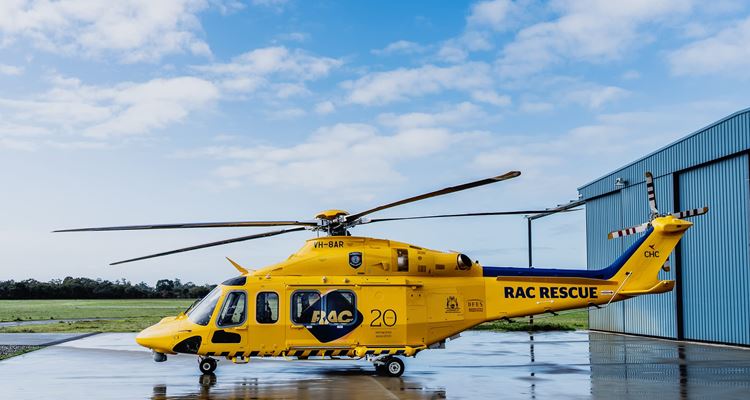A new era for RAC Rescue

Western Australia’s Emergency Rescue Helicopter Service is officially flying with the first of its new and improved fleet of AW139 rescue helicopters.
This State Government funded upgrade will replace all three Bell 412EP helicopters, one of which kick-started the service from Jandakot airport more than two decades ago.
The AW139s were built and transported from Milan in Italy and have been undergoing mission fit-out to meet DFES requirements here in WA. You can watch a time-lapse of the first build here.
Fire and Emergency Services Commissioner Darren Klemm AFSM said the AW139s would carry RAC Rescue well into the future.
“These are some of WA’s most heavily used search and rescue helicopters, quickly responding to some of the most complex incidents and major emergencies,” Commissioner Klemm said.
“Having state-of-the-art helicopters with the best possible aeromedical and rescue mission equipment ensures this free service can continue to operate for decades to come and save countless more lives in WA.”
Until now, RAC Rescue covered around 90 per cent of the State’s population and had an operational range of 200km out and back on one tank of jet fuel.
The AW139s will boost this range up to 350km, increasing the service capture area by 75 per cent. This means the helicopters can fly to Albany or Dongara and back without stopping for fuel.
RAC Rescue Pilot Craig Bowman has been flying with the service since 2011 and said it was an exciting time to be at the introduction of a new capability.
“The new helicopters take us to the cutting edge of the rescue aeromedical industry, allowing us to reach more people in more remote places, with improved mission systems, performance and technology to back us up,” he said.
The AW139s include and build on all of the capabilities of the previous helicopters, including the vertical helicopter hoist, search-and-rescue systems, infrared cameras and night vision goggles.
One of the key differences is a larger cabin that can be quickly reconfigured. This means RAC Rescue can be more flexible, especially for larger incidents, and transport more patients, equipment or up to 10 seated people.
They are also 45km/h faster, allowing RAC Rescue to get to an incident scene to insert the capabilities of the aircraft and crew quicker than ever, improving patient outcomes.
The new helicopters were awarded and delivered through a DFES and State Government public tender procurement process, with CHC Helicopter Australia awarded a new 12-year contract.
The RAC Rescue helicopters are funded by the State Government, managed by DFES and sponsored by RAC.

